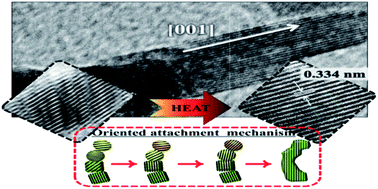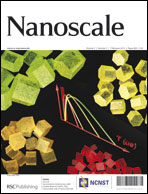A simple self-assembly route to single crystalline SnO2 nanorod growth by oriented attachment for dye sensitized solar cells
Abstract
One-dimensional (1-D) SnO2 nanorods (NRs) with a rutile structure are grown on various substrates regardless of the lattice-mismatch by using a new nutrient solution based on tin oxalate, which generated supersaturated Sn2+ sources. These affluent sources are appropriate for producing a large number of SnO2 nanoparticles, sufficient for stacking on a substrate surface by gravity, which then acts as a seed layer for subsequent nanorod growth. Single crystalline nanorods are grown along the [001] direction by the oriented attachment phenomenon in which the attached nanoparticles were rearranged to reduce the overall surface energy through sharing thermodynamically unstable crystal (001) planes. Furthermore, the grown SnO2 NRs are covered with a TiO2 particulate film and utilized as a photoanode in DSSCs. The power conversion efficiency is 8.61%, enhanced by 14.2% compared to the photoanode with only a TiO2 particulate film.


 Please wait while we load your content...
Please wait while we load your content...